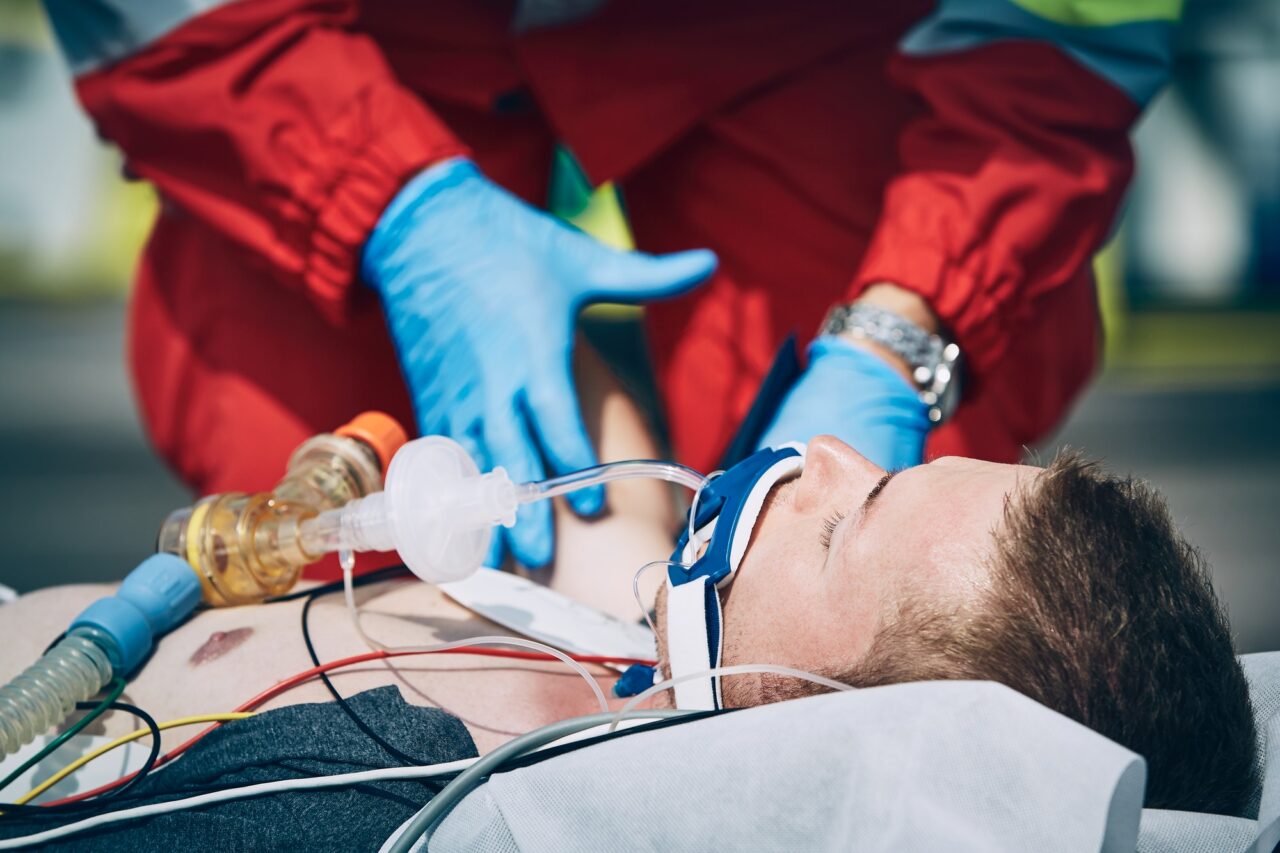Rice University bioengineering students are making a critical procedure easier for airway managers and safer for patients with a simplified, high-tech intubation device.
The Gateway to Airway team at Rice, working with an anesthesiologist, has developed a sleek laryngoscope that simplifies intubating patients for scheduled or emergent procedures.
The handheld, 3D-printed device contains a miniature wireless camera. Clinicians can use a switch on the comfortable handle to adjust the light from an LED near the camera, which feeds high-resolution video to one or multiple monitors.
The team — seniors Reed Corum, Rebecca Franklin, David Ikejiani, and Victoria Kong — will present the device at the George R. Brown School of Engineering’s annual Engineering Design Showcase on Thursday, April 21, at 4:30 p.m. The competitive event, open to the public, will be held this year at the Robert L. Waltrip Training Center, the inflatable facility on the west side of campus.
The Oshman Engineering Design Kitchen was approached by Dr. Kenneth Hiller, an anesthesiologist in private practice, about collaborating on a laryngoscope that would allow easier access to image the throat and larynx and help place a breathing tube into the trachea.
Hiller, who has a patent on the design, recognized early on that engineering it into a true product would require specialized knowledge.
“Current state-of-the-art devices have limitations,” Hiller said. “Placing an endotracheal tube can be challenging in a significant number of patients’ airways. For years, I’ve mulled over what I’d like in a device that can simplify the process and improve patient safety.”
“He came to us with something built out of popsicle sticks and a metal tube and said, ‘This is what I’m working towards but I don’t know how to build it myself,’” Franklin recalled.
“He wanted a video laryngoscope that not only had wireless video but also had a better blade profile,” Kong said. “There are two main types of laryngoscopes: straight blades and curved blades, and all of the video laryngoscopes on the market are in the curved blade format. While that’s great for compressing the tongue to get it out of the way, it has a very high displacement volume. It takes up a lot of room in the mouth.
“That makes it very difficult for the physician to insert the endotracheal tube to give the patient air,” she said. “The straight blade gives you a more direct line of sight. We wanted to combine the stabilization afforded by curved blades and a straight-blade profile, and we did that by tapering our blade.”
Hiller’s request was for a device that would cost under $500. “That’s within the constraints of our project and overall design, but it’s looking like we can easily get it below $200,” Corum said. The vacuum-formed, disposable sleeves that cover the blade can be made quickly for pennies, he said.
“It’s unfortunate that we’re developing this so late in the COVID pandemic, because any procedure that requires intubation requires a laryngoscope as well,” Ikejiani added.
“I wasn’t really aware of the impact this could have in the context of COVID-19,” Kong said. “But as we got into it, I realized this is an important tool to help airway managers minimize contact with potentially contagious aerosolized particles. And the wireless video capability of our device further creates distance for the safety of the health care provider.”
Kong noted all of the video-enabled laryngoscopes on the market require wiring to an external monitor, often a small one on the handle of the device itself. “That limits the amount of space and number of people who can be working on the same patient,” she said.
“Having the screen attached makes the scope more delicate and harder to transport from room to room,” Franklin said. “Having the video accessible on a tablet means a doctor in another room can watch and give feedback about technique to the airway manager performing the actual procedure.”
She noted the off-the-shelf camera’s wireless range is about 33 meters.
The students said they anticipate future refinements to include stainless steel construction for durability.
They also see uses for the device beyond the clinic. “EMTs use their scopes in the field, and we can see expanding to people, for example, in the military who require remote oversight where users may not have expertise gained from years of experience,” Kong said.


